On June 16 I went south to Lithuania for the second time to experience some semi-rare transit vehicles. Here’s a write-up of how it happened.
Preface
There are a few important railway terms to understand before reading this post: locomotive, coach, and multiple unit.
A locomotive is a rail vehicle designed to provide motive power, i.e its sole purpose is to pull or push other vehicles. These vehicles may be freight wagons, passenger coaches or engineering equipment. A train may have a single locomotive or multiple. Modern locomotives are powered by either a diesel engine (or multiple) or electric power. These can either be configured in a “double-headed” formation (2 leading locomotives) or a “top-and-tail” configuration (one at the front, one at the back).
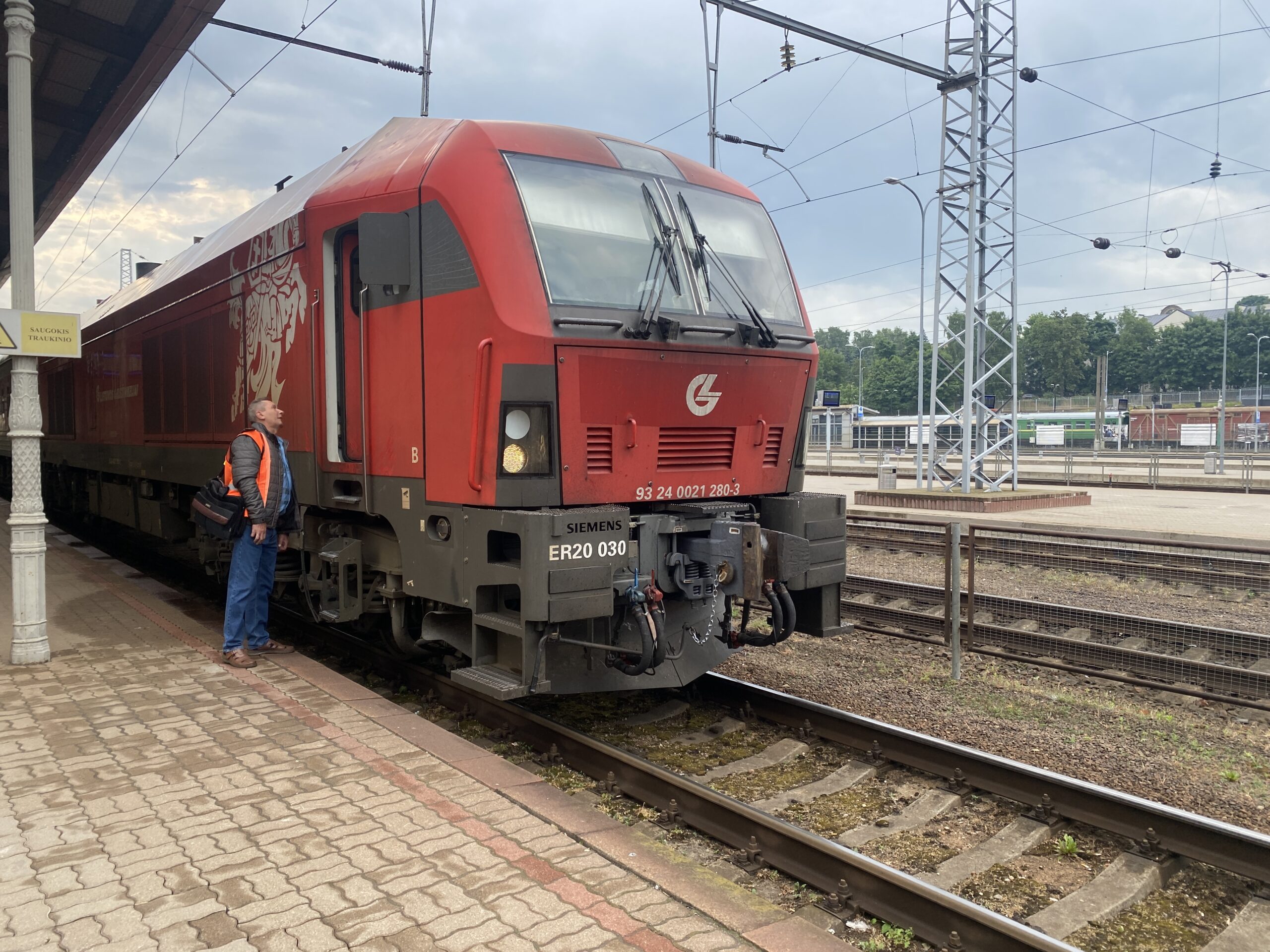
A Siemens ER20 diesel locomotive.
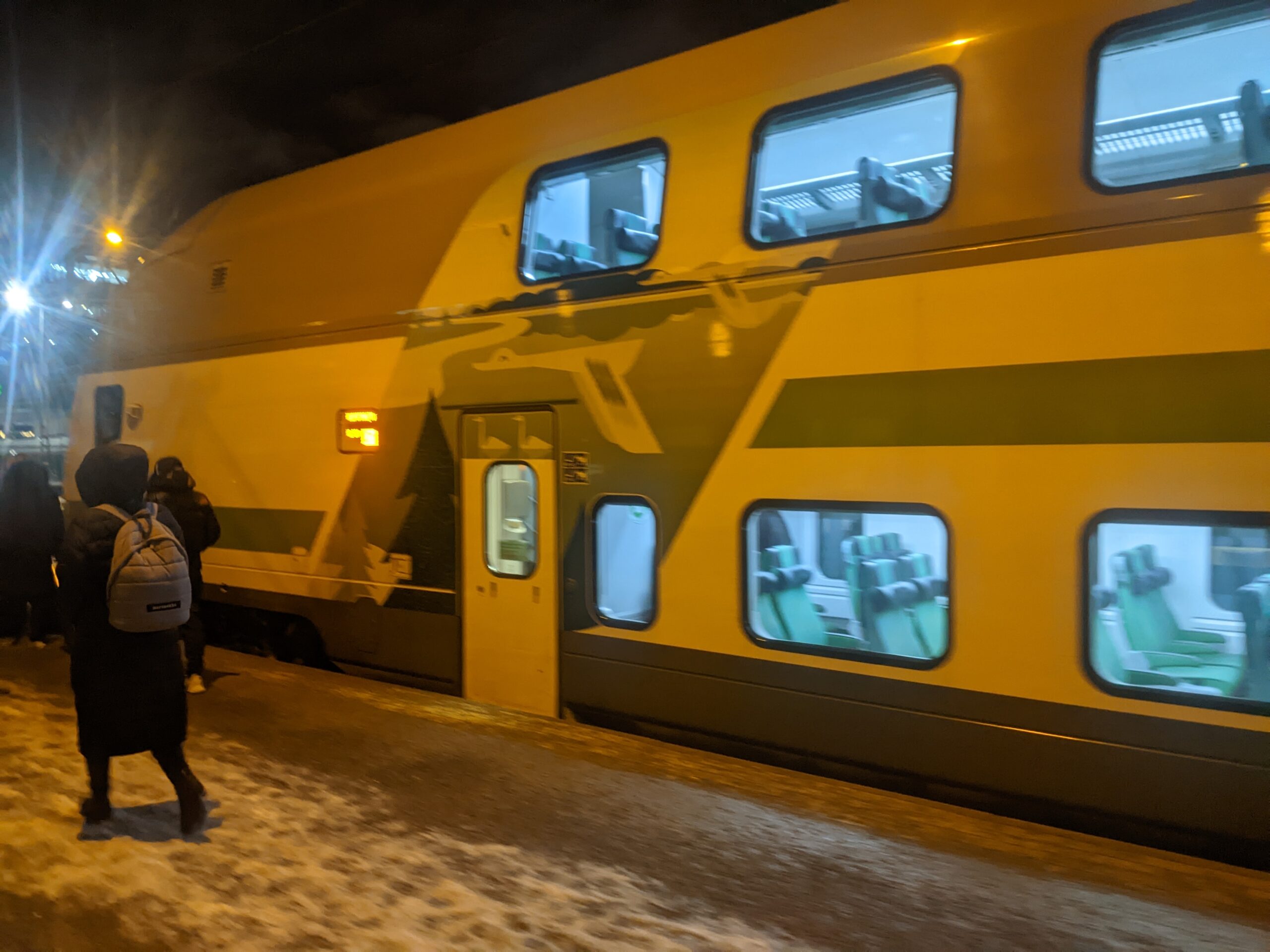
A double decker passenger coach in Finland. This is a “cab car”: it can control the electric locomotive at the other end of the train, yet the coach itself cannot provide power.
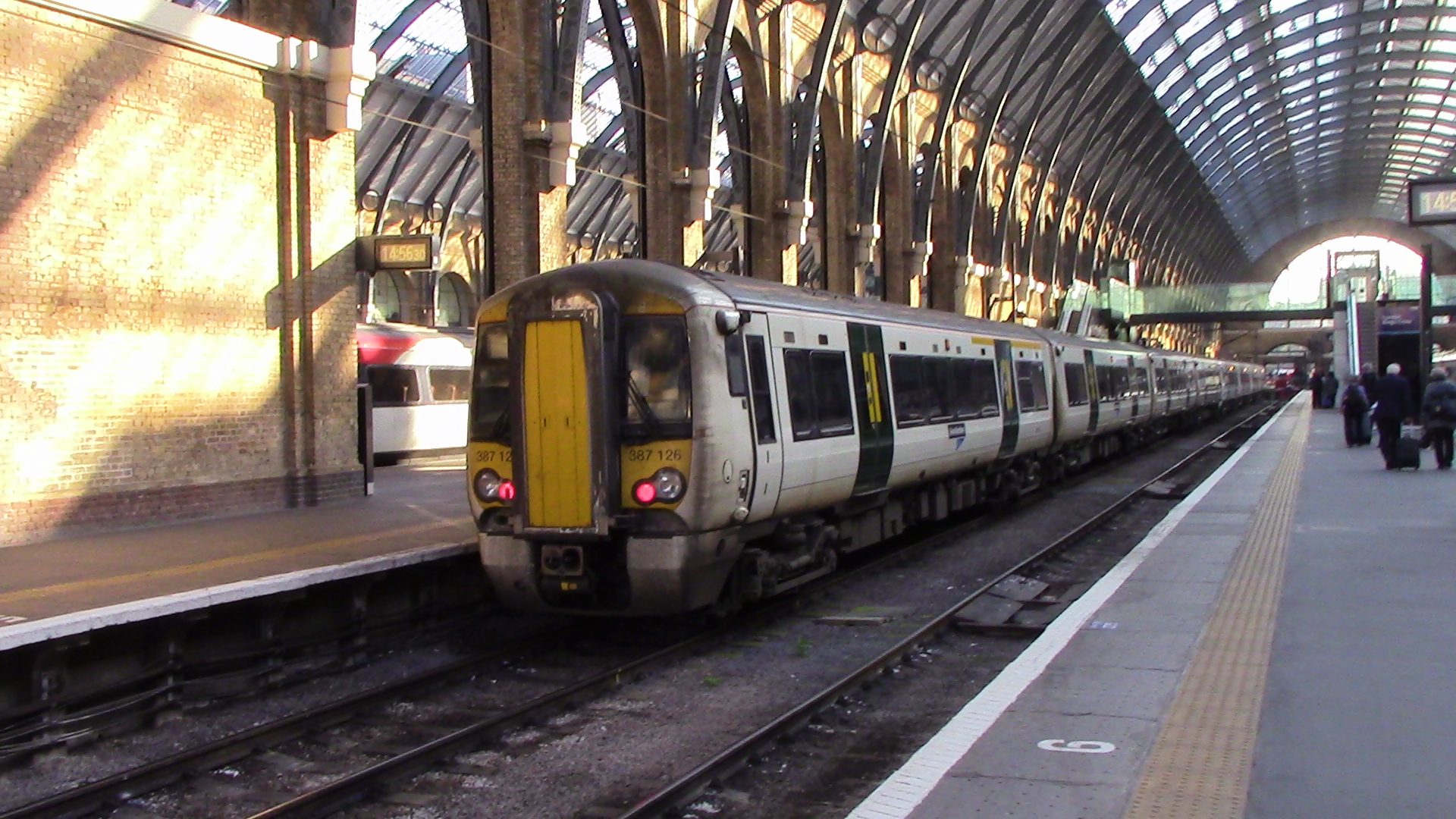
Class 387 EMU in the UK. Note the gangway connection at the end: if this train were coupled to another unit, passengers could walk between the two through this connection. 3 of the 4 coaches have driving axles. They can be coupled together to form sets of 8 or 12 coaches.
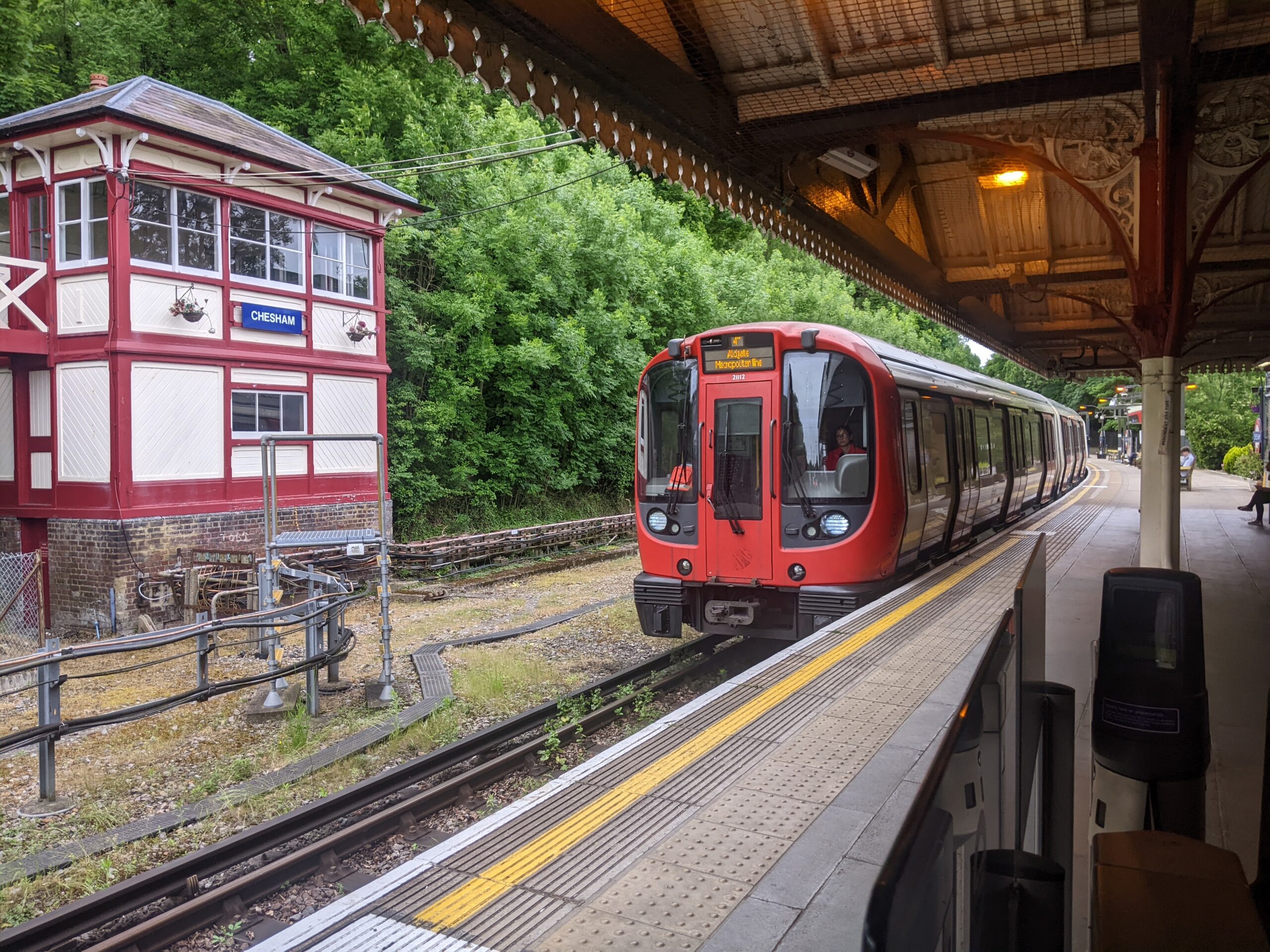
S8 Stock EMU on the London Underground. For best performance, all axles are powered.
Background
My first visit to Lithuania took place over the Easter weekend in 2023. Seeing local transit was somewhat of a goal, but not the primary. On the first day of that trip I noticed a loco-hauled train headed to Klaipeda, and a few days later I asked on a Discord server for help with identifying these coaches. Serendipitously, a person from Vilnius saw my question. Not only did this person, who shall remain unnamed (because I don’t know their name) identify the vehicles, they gave me details on when this train runs and when it may be discontinued. The line from Vilnius to Klaipeda is currently being electrified, so once it’s complete it will be replaced by new trains from Stadler. Work on the line has already been ongoing for months which has caused reductions in frequency, but in June it will be paused, to allow for more trains to run in the summer season.
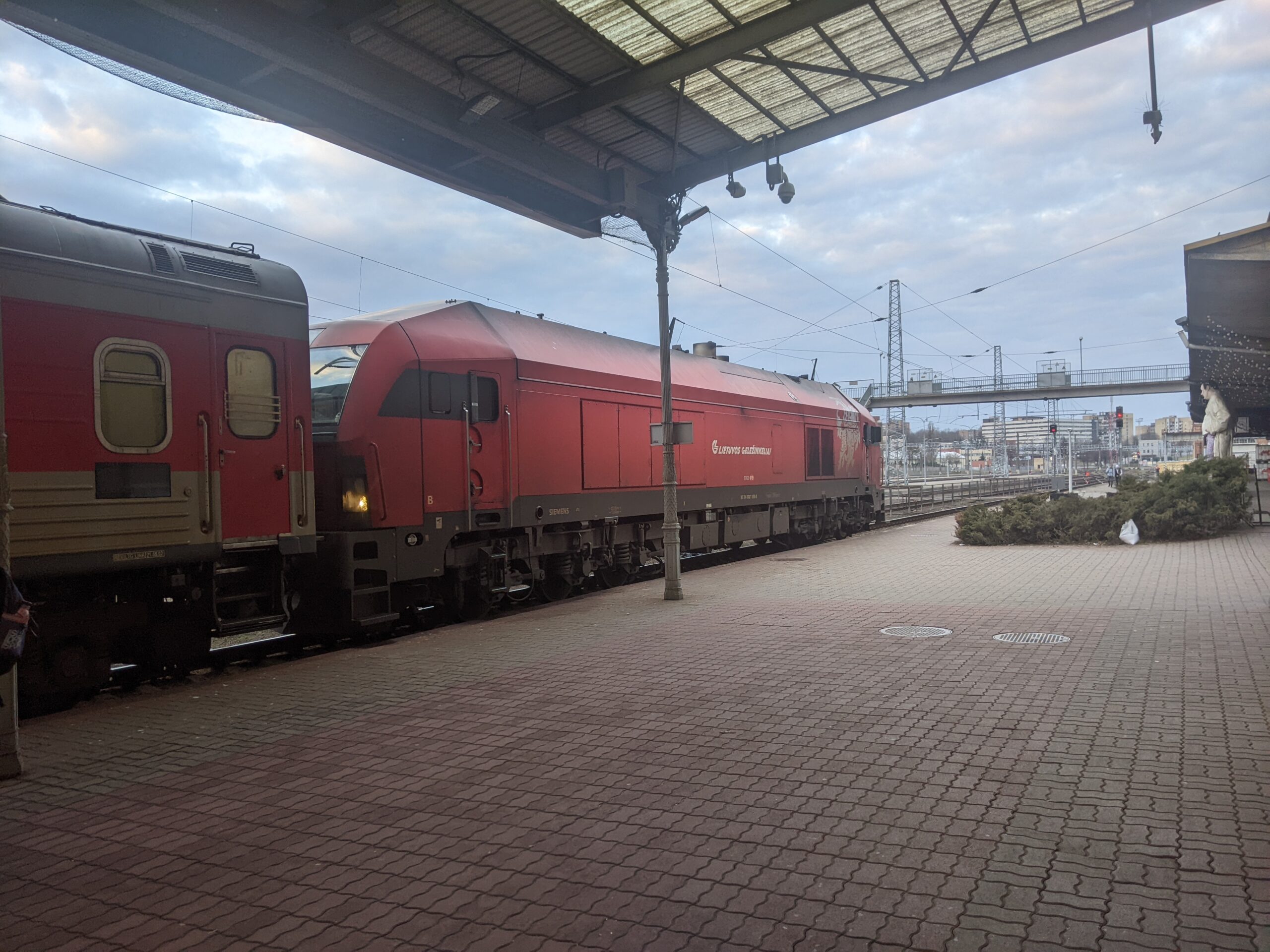
Train bound for Klaipeda in April
Entry 1, 07:45 UTC+3
For the second time this year I boarded the “Overnight Extreme”, as I have started calling it lately: the 22:30 Lux Express bus from Tallinn to Vilnius. A roughly 8 hour journey to the Lithuanian capital stopping only at Pärnu and Riga to head onwards to Klaipeda, a port city on the western coast of the country. I sat down in seat 33, hoping that 34 next to me would be free for at least a part of the journey. A large number of passengers left the bus in Pärnu, yet I was still stuck with the same gentleman next to me. 3 hours later in Riga, the number of passengers increased slightly but looking around it seemed that a few people did manage to have a seat pair to themselves. This unfortunately did not happen to me, and once past the Lithuanian border I gave up on sleeping and accepted that I will be staying up all the way to Vilnius. We had one more stop at the Panorama shopping centre where the gentleman who had been sitting next to me got off, so I guess my wish did technically come true. For the final 30 minutes of the journey I had the seat pair to myself and we arrived at Vilnius Coach Station at 6:50: 5 minutes early.
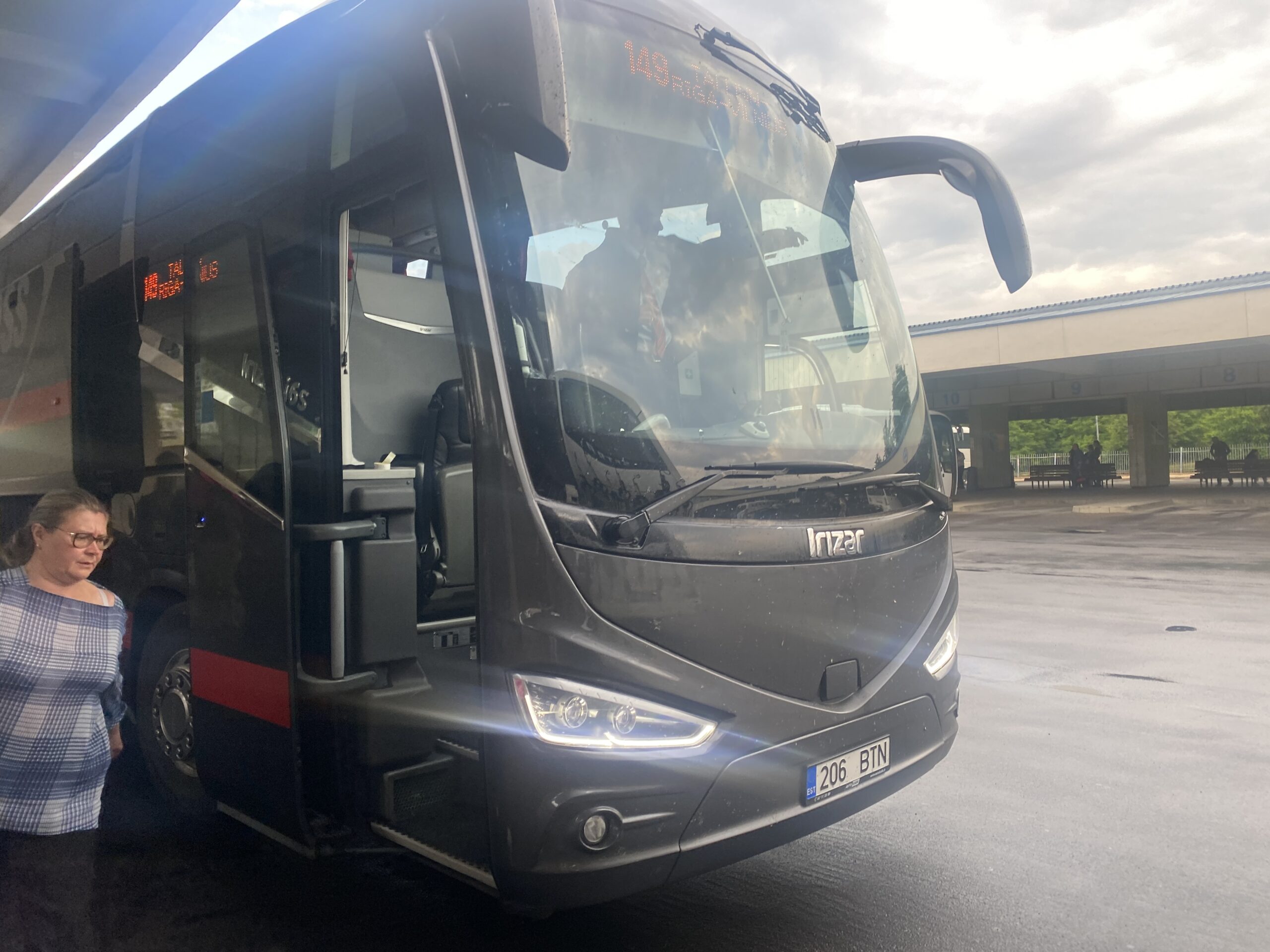 I had considered going to the Iki grocery store at the station, but as it opened at 7 and I had stockpiled snacks already I decided against it. I walked across the street to the central railway station, however my onward train hadn’t yet arrived. I did not wait long though: a few minutes past 7 my onward train did arrive, as I saw a back end of a 61-4179 series passenger coach slowly approach the platform. This was in fact the last coach of the train of a total of 4 coaches, led by a Siemens “Eurorunner” ER20 diesel locomotive. I waited a few minutes as the train was prepared for service and soon the doors were opened, the step plate lowered, and I was welcomed on board by the conductor. As I was the first to board, I was shown to my compartment in the coach by the conductor, but as other passengers boarded they found their compartments on their own. It seemed like the train was rather busy, however I am only sharing this compartment with one other passenger. At 7:30 we set off for Klaipeda, more than 4 hours away.
I had considered going to the Iki grocery store at the station, but as it opened at 7 and I had stockpiled snacks already I decided against it. I walked across the street to the central railway station, however my onward train hadn’t yet arrived. I did not wait long though: a few minutes past 7 my onward train did arrive, as I saw a back end of a 61-4179 series passenger coach slowly approach the platform. This was in fact the last coach of the train of a total of 4 coaches, led by a Siemens “Eurorunner” ER20 diesel locomotive. I waited a few minutes as the train was prepared for service and soon the doors were opened, the step plate lowered, and I was welcomed on board by the conductor. As I was the first to board, I was shown to my compartment in the coach by the conductor, but as other passengers boarded they found their compartments on their own. It seemed like the train was rather busy, however I am only sharing this compartment with one other passenger. At 7:30 we set off for Klaipeda, more than 4 hours away.
 Lithuanian Railways operate a varied fleet of trains. Few Latvian-built diesel multiple units remain in service from the Soviet era, however most have been replaced by Polish trains from this century. Trains from Vilnius to Kaunas and Trakai use double-decker electric multiple units built by Škoda. However, few loco hauled sets remain in service: seemingly the only ones in the Baltics. The train I’m on is one of them. Operating only on weekends and Fridays, this formation is used to provide extra capacity on the high demand route. It won’t remain for long however: electrification of the line is currently in progress and once complete, new hybrid trains by Stadler will take over. With trips to Russia currently impractical, this is the only way to see the “Russian” train travel experience. The compartments in this coach are secluded and spacious and the table is great for writing. The seats have plenty of padding and the ride quality is also acceptable. Hopefully the trains that replace these can provide the same level of comfort.
Lithuanian Railways operate a varied fleet of trains. Few Latvian-built diesel multiple units remain in service from the Soviet era, however most have been replaced by Polish trains from this century. Trains from Vilnius to Kaunas and Trakai use double-decker electric multiple units built by Škoda. However, few loco hauled sets remain in service: seemingly the only ones in the Baltics. The train I’m on is one of them. Operating only on weekends and Fridays, this formation is used to provide extra capacity on the high demand route. It won’t remain for long however: electrification of the line is currently in progress and once complete, new hybrid trains by Stadler will take over. With trips to Russia currently impractical, this is the only way to see the “Russian” train travel experience. The compartments in this coach are secluded and spacious and the table is great for writing. The seats have plenty of padding and the ride quality is also acceptable. Hopefully the trains that replace these can provide the same level of comfort.

Entry 2, 13:17
Having written the last entry, I went to watch some videos I had downloaded to my iPad and managed to do a short tactical nap. At about 11:40, I heard an automated announcement for what I presumed to be Klaipeda, and since everyone else in my compartment was heading out I thought that we must be arriving at the terminus. However, as I stepped out I realised we were in fact at Kretinga: just one stop short of Klaipeda. Fortunately the conductor let me back in, with just seconds until departure. At that point I had the whole compartment to myself, so I lowered one of the backrests to form a bed, so I could lie down for the final 20 or so minutes.
Upon arrival at Klaipeda, right on time at 11:58, the locomotive detached from the coach formation to run around to the other side of the train. The coach formation remained at platform 2 at the station for cleaning. I had 2 missions in Klaipeda: finding food and if possible, a fridge magnet. The first seemed simple enough, an Iki grocery store was a 5 minute walk from the station. After grabbing some local chocolate and ice cream I went to look for the fridge magnet, which fortunately didn’t take long. Within the same building I saw a home goods store with magnets on display, and my Russian skills proved useful as the shopkeeper didn’t speak English. With the missions completed I headed back to the station, arriving at about 12:26. A small single-car diesel train had pulled into platform 1; this would depart at 12:30 for Šilutė. My train back to Vilnius departed at 12:45, with the exact same coach formation and a locomotive at the other end.
 This time I had booked a seat in a standard open-plan carriage. Unlike the compartment carriages built in Tver in Russia, these were built in Poland. They feature around 60 standard high-backed seats, 2 tables with 4 seats each and one compartment as well at one end of the coach. The other end houses bicycle storage. These seats I actually find more comfortable than those in the compartments. The seatback is at a better angle, armrests are available, the tables are larger and have nearby power sockets too. The compartments are of course more spacious and secluded, since the door can be closed.
This time I had booked a seat in a standard open-plan carriage. Unlike the compartment carriages built in Tver in Russia, these were built in Poland. They feature around 60 standard high-backed seats, 2 tables with 4 seats each and one compartment as well at one end of the coach. The other end houses bicycle storage. These seats I actually find more comfortable than those in the compartments. The seatback is at a better angle, armrests are available, the tables are larger and have nearby power sockets too. The compartments are of course more spacious and secluded, since the door can be closed.
 Another item worth mentioning is the food service on board the train. While there is no dedicated buffet or restaurant car, some food items are sold by the conductors in each coach, such as coffee, tea, water and sandwiches. I did buy a bottle of water on the train to Klaipeda, for a price of 1.50. Since I did bring my own snacks I don’t think I’ll buy any more though. I’m due to arrive in Vilnius at 17:27, five hours before my bus back to Tallinn.
Another item worth mentioning is the food service on board the train. While there is no dedicated buffet or restaurant car, some food items are sold by the conductors in each coach, such as coffee, tea, water and sandwiches. I did buy a bottle of water on the train to Klaipeda, for a price of 1.50. Since I did bring my own snacks I don’t think I’ll buy any more though. I’m due to arrive in Vilnius at 17:27, five hours before my bus back to Tallinn.
Entry 3, 08:26 June 17
I arrived 30 minutes late into Vilnius, as we were held at a station before Šiauliai. Once we did arrive, I had quite a lot of things to do before heading back. Originally I intended to visit the railway museum on the 3rd floor of the station, but as it closed at 6 I moved on to the next item: Škoda 15Tr trolleybus ride. Few of these articulated Škodas remain in service, however I did receive information from my unnamed source that they are operating on line 7 in peak hours. I managed to see one just outside the station, but had no time to ride it, as I was already due to move on to my next challenge.
 That being the train to the airport. Vilnius airport is served by both trains and buses, yet the train connection is much less frequent. It’s a single track line, non-electrified, with trains no more than once per hour. My train at 18:35 would in fact be the last train to the airport from Vilnius that day. I saw the outside of the airport, based on its architecture it’s more resemblant of a train station. I didn’t have time to wander around for long though, bus 3G would depart in a few minutes back to the city centre.
That being the train to the airport. Vilnius airport is served by both trains and buses, yet the train connection is much less frequent. It’s a single track line, non-electrified, with trains no more than once per hour. My train at 18:35 would in fact be the last train to the airport from Vilnius that day. I saw the outside of the airport, based on its architecture it’s more resemblant of a train station. I didn’t have time to wander around for long though, bus 3G would depart in a few minutes back to the city centre.

 Rather than try to head back to the station I decided to take the 3G bus north to where it meets with the trolleybus line 7 running east to west. This is where I would wait to see if any 15Trs would pass and get on the first one I see. I had heard from my unnamed source that all the 15Trs would return to the depot between 7 and 8 pm, so it was a question of whether they were even running at all at this time. After several 7s had passed and I had almost given up, the 15Tr did show up, heading west out of the city. I rode it for just 2 stops, then got out to head back to the train station.
Rather than try to head back to the station I decided to take the 3G bus north to where it meets with the trolleybus line 7 running east to west. This is where I would wait to see if any 15Trs would pass and get on the first one I see. I had heard from my unnamed source that all the 15Trs would return to the depot between 7 and 8 pm, so it was a question of whether they were even running at all at this time. After several 7s had passed and I had almost given up, the 15Tr did show up, heading west out of the city. I rode it for just 2 stops, then got out to head back to the train station.
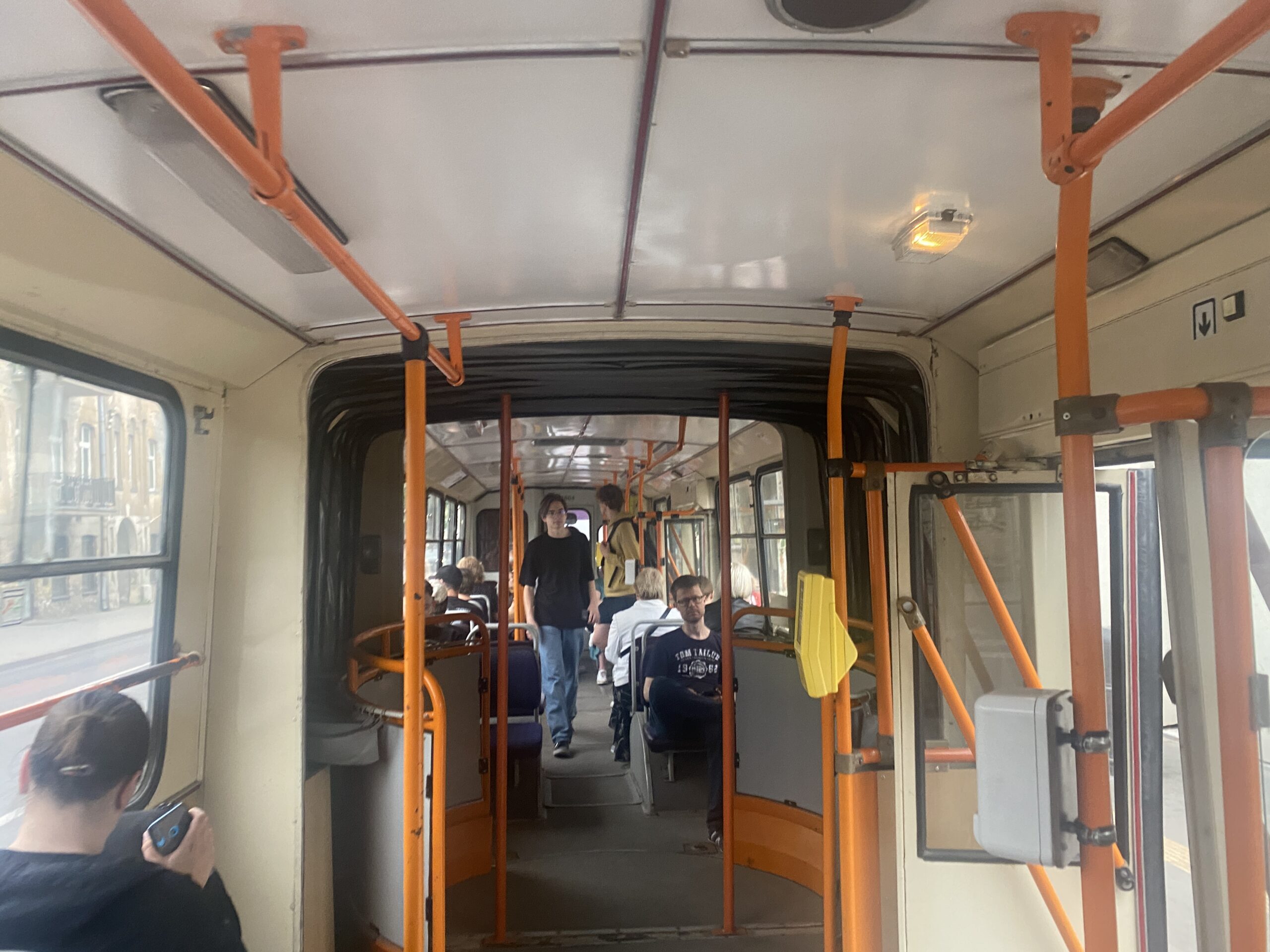
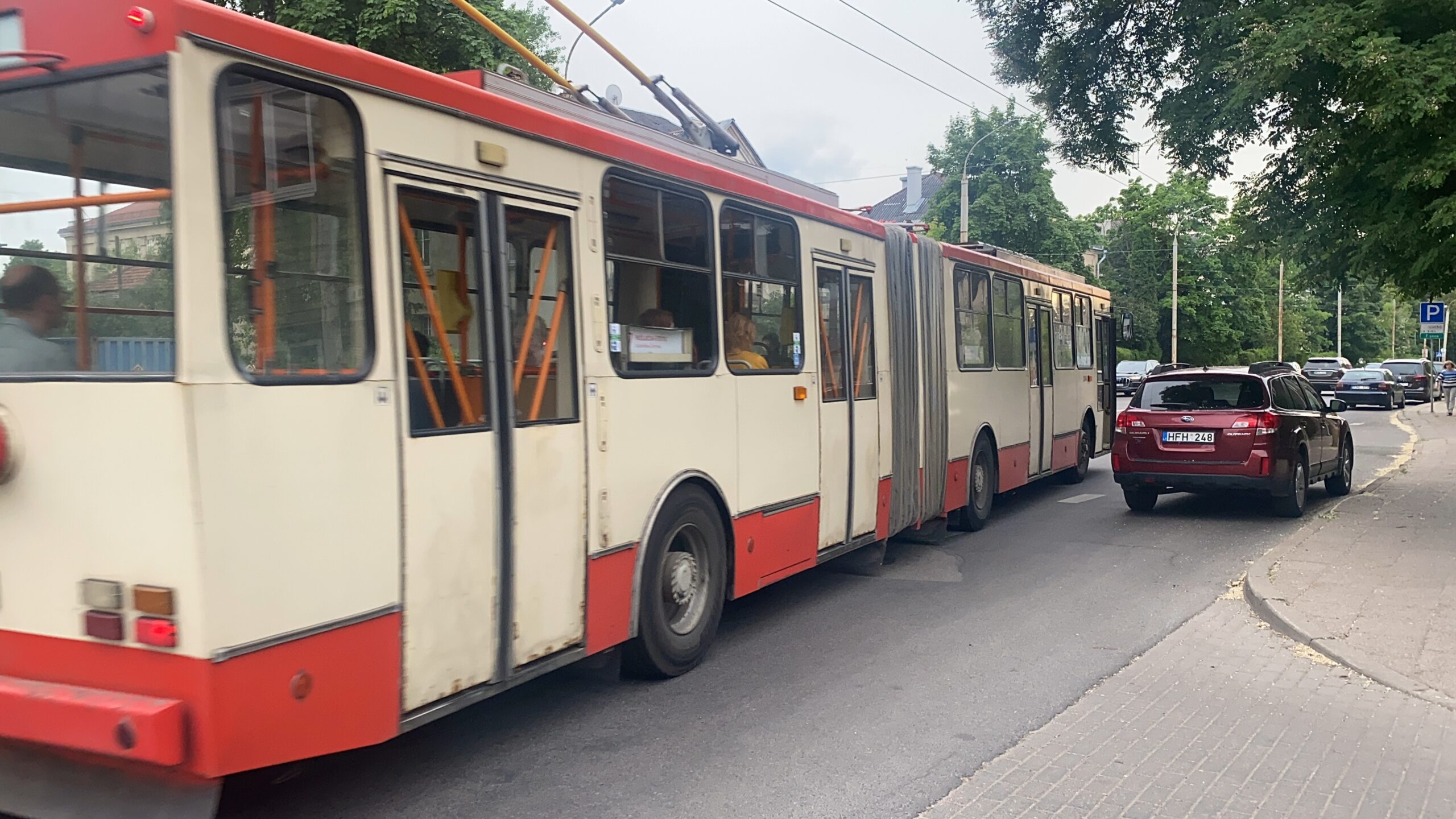 By now it was about 19:40, and I knew that once the Russian train enters the station from Kaliningrad, security would be tightened and I most likely would not be allowed to film. So I bought a ticket for the 20:00 train to Lentvaris, a junction station about 30 km west of Vilnius. Like clockwork the train bound for Moscow was indeed at the station despite sanctions on Russia, the grey RZD-liveried passenger coaches standing behind the fence at the international area. Transit only: no one gets out and no one gets in within Lithuania. I expected my train to be served by a DR1A type of DMU, built in Latvia, yet instead a Poland-built 620M showed up, a single car “railbus”. As expected, this train was rather crowded, yet I did find a seat for the 22-minute journey. At Lentvaris I had just one plan: see a DR1AM and film it. Serendipitously I was able to manifest it: the 20:29 train from Varena to Vilnius was a DR1AM. I decided to head back to Vilnius on the next train, as it had started to rain by now and there wasn’t much else to do in Lentvaris. Running a few minutes late, a double-decker headed for Vilnius showed up. I bought my ticket on board, and got to Vilnius at about 9, exactly.
By now it was about 19:40, and I knew that once the Russian train enters the station from Kaliningrad, security would be tightened and I most likely would not be allowed to film. So I bought a ticket for the 20:00 train to Lentvaris, a junction station about 30 km west of Vilnius. Like clockwork the train bound for Moscow was indeed at the station despite sanctions on Russia, the grey RZD-liveried passenger coaches standing behind the fence at the international area. Transit only: no one gets out and no one gets in within Lithuania. I expected my train to be served by a DR1A type of DMU, built in Latvia, yet instead a Poland-built 620M showed up, a single car “railbus”. As expected, this train was rather crowded, yet I did find a seat for the 22-minute journey. At Lentvaris I had just one plan: see a DR1AM and film it. Serendipitously I was able to manifest it: the 20:29 train from Varena to Vilnius was a DR1AM. I decided to head back to Vilnius on the next train, as it had started to rain by now and there wasn’t much else to do in Lentvaris. Running a few minutes late, a double-decker headed for Vilnius showed up. I bought my ticket on board, and got to Vilnius at about 9, exactly.
 With an hour and a half still to go until my bus back to Tallinn, I decided to look for souvenirs. Unfortunately, few places that sell souvenirs are open at this hour. After trying the Iki grocery store near the bus station I decided it’s not worth it, there can’t be anything open at this hour that sells fridge magnets and the like.
With an hour and a half still to go until my bus back to Tallinn, I decided to look for souvenirs. Unfortunately, few places that sell souvenirs are open at this hour. After trying the Iki grocery store near the bus station I decided it’s not worth it, there can’t be anything open at this hour that sells fridge magnets and the like.
Except at the airport.
After looking at the airport’s website for shops and their opening hours, plus whether they stock souvenirs, I considered taking a Bolt Drive rental car to the airport and back. It was about a 10 minute drive, I figured 30 minutes there and back should something go wrong and still with time to spare. Instead however, I decided to eat one “real” meal at last and ordered a single cheeseburger from McDonald’s. As there was quite a long queue, I figured it could be a bit of a wait.
I finished the burger at 21:33, with an hour to spare still.
And so I thought why not, let’s try the airport. I booked the Audi A1, set up GPS navigation and headed to the airport. Arriving at around 21:50 I went inside the arrivals area to look for Narvesen, of which there are supposedly 3 at the airport. Indeed, they did have souvenirs, albeit the fridge magnet I bought cost €5. I headed straight back to the station, arriving a few minutes after 10 and having spent just €3.89 for the journey, plus the cost of the magnet itself. Now it truly was time to head to the bus station and await departure.
